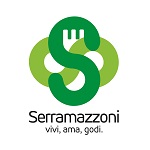The gastronomy of Serramazzoni is tied to its ancient tradition. It’s hard to find places where the flavors and culinary traditions have been preserved intact from any contamination and approval of taste. The flavors of gastronomy of Serramazzoni come from far away, from the depths of the history of this province, from centuries of experience in farming the land, rearing in the processing of raw materials.
And if Parmigiano Reggiano, cured meats are the most important voices in the local agricultural economy, the only wines to bear the different names and indications of origin in ‘Modena Apennines are Malbo and Chardonnay, and Lambrusco di Modena who takes D.O.C in the territory of Serramazzoni. The cuisine of Serramazzoni has always been considered “simple” because it makes exclusive use of local products and is the result of a few processing, yet reveals touches of creativity in many recipes, often resulting from nutritional needs or limited availability and variety of materials first, that pushed the older generations to use them or put them together in an original way. This is the case of a dish like “calzagatti”,made with yellow maize flour and beans, created to overcome the lack of meat. Absolute unusual are “borlenghi” and “crescentine” best known as “tigelle” name taken from the stone in which it was cooked the crescentina, the original method where pasta circular is placed directly on a stone by the red-hot coals, between two chestnut leaves and cooked with the heat of the stone itself.
The homemade pasta, with eggs and flour, hand –cut with “taglierino”, a tool typical of Modena, is another strength of the gastronomy of Serramazzoni. All over the territory you can easily find the tortellini made with “pesto” of parmigiano, mortadella, meat, prosciutto, rigororously served in broth, lasagne, tagliatelle and tortelloni with ricotta, fresh cheese from the local dairies farms.
Among the specialties of the area, as mentioned, the place of honor goes to salami cutting, as the Modena prosciutto, salame mountaineer, made by our farmers, greaves shortbread, the pancetta and lardo, who wrought with garlic and rosemary dressing provides unique crescentine and borlenghi.
The local ”Must” is surely the traditional balsamic vinegar, produced with grape must of the area and aged for at least twelve years.
Used already from the Roman times, its production has been documented since 1046, was highly appreciated by the Este in the Renaissance, who made it known to the high aristocracy and numerous rulers. The vinegar productions of Serramazzoni can be visited where it’s possible to taste the precious ingredient with cheese, fruit and pastries.
Serramazzoni is rich chestnut plantations thanks to which its people survived even in times of famine. Chestnuts and, above all, the flour made from it with the drying in the “metato”, a tipycal building, are the basis for many dishes. They are still widespread among the people of the mountains. It is very simple recipes, which are derived from the most authentic rural tradition like polenta, chestnut cake, pancakes with chestnuts.
In addition, the pristine mountain and foothill areas, so rich in herbs and flowers, are the ideal environment for the important production of honey. Very particular is the cultivation of roses, which are transformed into amazing dishes and desserts to be enjoyed in the period of May and June, on the occasion of the Festa of the Rose. Tied at parties and local traditions are the sweets as the “bensone” by “dunking” in a glass of Lambrusco or sweet wine produced locally, the tart of cherry collected in Pazzano, Valle and Riccò, the Torta di taglatelle e la zuppa inglese.
For lovers of spirits and infusions, to signal the nocino of Serramazzoni, which is obtained by maceration of green walnuts, strictly caught the night of St. John on June 24, in a solution of alcohol, water and sugar. Great to be consumed after meals as a digestive.
Polenta
Characteristic flat widespread throughout the Modena mountains, accompanied traditionally in the rustic dishes. Prepared with yellow maize flour, polenta should be served on the plate with the sauce of tasty meat and mushrooms, cheese, sauces and stews, or cut into slices and fried to accompany the dishes.
Crescentina
It is an ancient mountain bread made from a clever mix of flour, water and salt, cooked over the fire in special metal plates, a time, however, it was baked in molds round of fireclay, such tigelle, placed in the fireplace in direct contact with embers, remains unchanged taste and excellent flavor.
The small hard thick round shape you can taste hot and crisp, served with fine meats and sausages local or served with a pesto of lardo, garlic and rosemary and a sprinkling of grated Parmigiano Reggiano.
. Dish of many festivals along with fried dumplings or fried crescenta the characteristic shape bubble, prepared with the same mixture of crescentina, but cut into diamond shapes and fried in boiling lard from stuffing to taste with meats and cheeses.
Borlengo
Borlengo as crescentina, is a very old typical mountain bread. Its origin is a mix of gastronomy and history that goes back even to prehistorical times, when the lands of Modena’s Apennines were inhabited by primitive people. Their diet included unleavened bread, simple but very nutritious, composed of water and coarsely ground flour, the same ingredients that are still the basis of this preparation. A thin sheet of “glue” (flour and water) cooked in a “sun” ready to roll “the cunza” (lardo, garlic, rosemary) and Parmigiano Reggiano.
